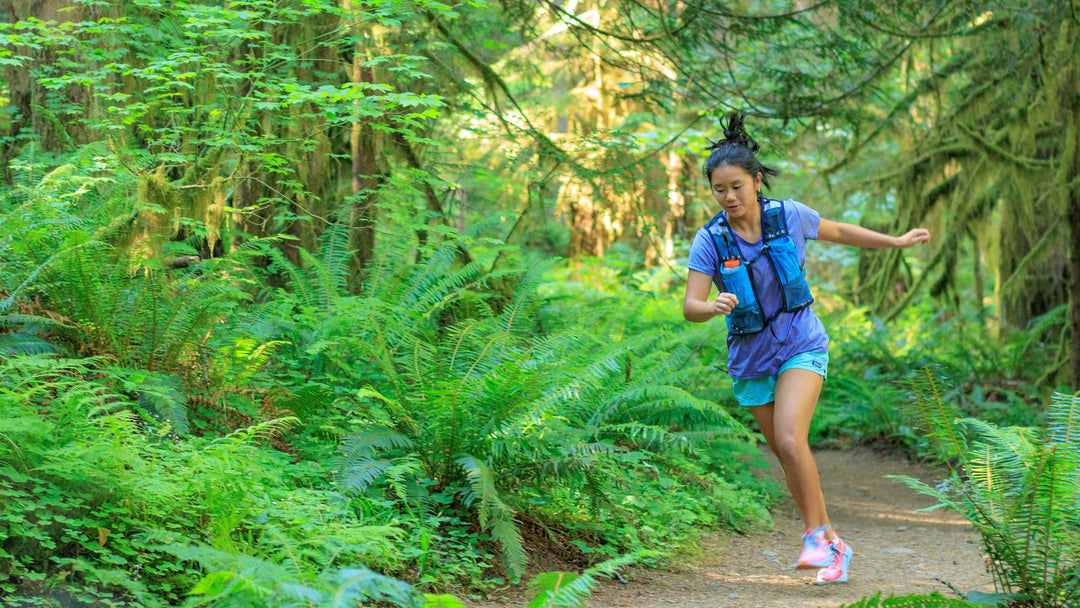What Is In My Bag: Fall Hiking
I get a lot of questions about what gear I use for some of my hikes and I figured I could answer them in a more organized way than individual email responses. So as a result of your questions, we are proud to present a new segment of the blog: "What is in my bag" for different times and activities. To get the ball rolling, the first post will be about fall hiking, mainly in rainy and mixed weather areas like the PNW, the UK, Patagonia, New Zealand and Scandinavia.The premise is: day hiking in any terrain conditions (not scrambling or hiking) in areas with no snow but warm days, cold nights and a real chance of rain and cold winds.
Never Leave The House Without (aka: emergency kit)
This part will probably be on every post as my emergency kit is always (yes, always, even when in a local park) with me and includes:
- Headlamp (+spare batteries) - not much to say here, I always have a headlamp; you never know if and when you'll get stuck outdoors in the dark. I use the Silva Siju
- Medical tape wrapped around a lighter - two for one: a mini BiC lighter with a foot or so of medical tape for blisters or to work with the roll of bandage (see below) to make band aids or any dressing
- Flint - even if it is wet, the lighter is out or in almost any other situation, the flint can help you make fire in case of emergency (only!). Just make sure you know how to use it. I use the Light My Fire FireSteel
- Ibuprofen - can work for pain or inflammation, from a hangover to a twisted ankle or sore knees
- Surgical Gloves - one of those random things that can save a persons life: keeping pressure on a wound without getting it infected. It can also be used to carry water or waterproof gear in an emergency
- Roll of bandage - to dress wounds, make a sling, support a bruised ankle, filter water and so much more
- Vaseline - my skin gets dry fast in the fall with the changing weather and the combination of wind and sun, so I try and prevent my lips from getting chapped. Also good for any kind of skin issue: rashes, hand moisturizing, etc
- Vecto - emergency water to carry
- Chlorine Dioxide Water Tabs - the lightest way to carry water treatment, I make sure to have 10 of them, for 2 days of drinking. I use Aquatabs
- Compass - on day hikes I tend to know where the north is, so the compass tends to be for emergencies.
All of the above is packed into a simple, thick PE bag (can be a Ziplock) and just tossed into the backpack on every outing.
Just want to add here a note about my pocket knife - it usually lives in my pocket, but is part of my emergency gear. Mine is a small knife as I needed something that complied with UK rules and am just used to by now.
Basic Gear
Here is what I consider to be pretty much basic gear for going outside - there might be a few "extras" to account for it being fall, but otherwise I see these items as essential for every day hike:
- 25L Backpack - I prefer a running style pack that comes with a top load and a hood. These kinds of bags are light, very simple and designed to be "no fuss". I use the Haglofs Gram Comp 25
- 2L Water - I tend to not plan on treating water on day hikes (unless it is very hot), and instead just take 2 liters of water in collapsible containers to reduce the need to stop and mess with water treatments. I usually use 2 of the 1 liter Platy bottles
- Food - With food, just like with water, I want something that takes the least amount of time to deal with, so it is breakfast at home and I snack on fruit, trail mix and maybe some string cheese throughout the day
- Camera - Despite the quality of cameras in phones I love dedicated cameras and the quality the offer, which allows great shots of nature and gear in use. I use the Sony RX-100 II stored in a ziplock
- Phone - Not really much to say here, to each their own on this topic, but I do have a big and robust case for my phone, especially when hiking, and a ziplock to store it in
- Satellite Location Device - For many years I thought these were for people who are overly fussy and neurotic, but then I got married and had kids and now I always take one; a quick message home that all is well (or not) makes a huge difference. I use the Delorme Inreach SE (now Garmin Inreach)
- Trekking Poles - Ruined knees and fear for the future means I always have poles, always. Want to guess what I use? I prefer EVA and for day hikes usually pick the Vertex carbon
- Poo Bag - LNT at its best, my poo bag is a 1 liter dry bag with a half roll of toilet paper, hand sanitizer and a ziplock for dirty papers.
Seasonal Clothing
What fall is known for the most is rain, always rain. As the temperatures are usually on the milder side, it is rarely really cold or really hot, but rain is always around the corner. For that I carry:
- Wind Jacket - Wind can be a major factor for loss of body heat so a wind shirt is a great solution when temperatures are higher but wind chill is a danger. I use the Arc'teryx Squamish hoody
- Poncho - The most breathable (after an umbrella) waterproof protection for easy on and off in the shoulder seasons. I use: Sea To Summit poncho/tarp
- Insulated Jacket - Temperatures can change quickly, so a synthetic insulated jacket can be a real life saver on breaks, stopping to admire the view or in an Emergency. Down is great,but in the very wet season a synthetic jacket will be more effective. I use: Arc'teryx Atom LT Hoody
- Gloves - Numb fingers can't do much if things turn to bad, so keeping those digits protected, even if it is a thin fleece, can make a huge difference in morale. I use: OR PL100 gloves
Warm clothing and gear
Fall hiking clothing should, more than anything, be versatile. In order to achieve this, we want a couple of thin layers that can work well together while covering most of the body. For me that means:
- Shorts - I call fall the season of shorts and rain: usually during the day the temperatures are comfortable for hiking in shorts, especially if I'm moving a lot, and that helps to vent the body when the hiking gets hard. I use: UA running shorts or TNF Horizon shorts
- Short Sleeve Top - The choice is difficult between Merino wool and synthetic, as they will both perform great in their own way; as the temperatures cool down, thin Merino works for me. I use: Janus Summerwool top
- Long Sleeve Top - For sun protection, bug protection, breaking the light wind and keeping the potentially cold tarp off your skin. Many times I will take a Merino hoody with a zip, but a button down bug shirt is really convenient too. I use: TNF safari shirt or Trekmates Merino hoody
- Trail Shoes (with mid-weight socks) - Nothing beats light and agile trail shoes when hiking, especially on a day hike. Embrace the "wet feet" effect to stop fearing puddles, especially combined with mid weight Merino wool socks to keep feet warm even when wet. I use: Inov8 Race Ultra 270 and Icebreaker socks
- Sun Hat - Wide brimmed, trucker, shader or a race hat, all will protect your head from the sun and your face from the rain, a must on fall hikes. I use: Inov8 Hotpeak 40
- Buff - The ultimate multipurpose kit: neck shade or warmer, headband or arm sweat absorber, balaclava or just as a "snot rag", it does it all. I use: Cnoc Outdoor logo High UV Buff

That is pretty much all you need for a day outdoors in our neck of the woods, but what is your version? Are you a hot hiker? Dealing with surprise snows? Let me know in the comments so we can compare and contrast.















Leave a comment